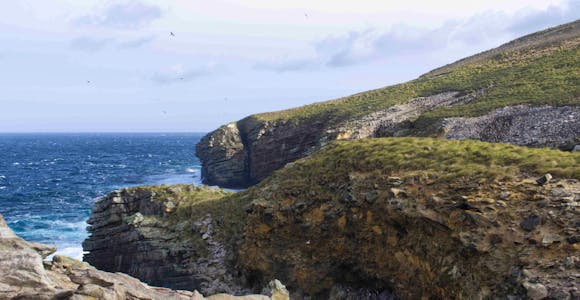
New Island
In the southwest of the Falklands, New Island is one of the most scenic places in the archipelago, and is home to one of its most busiest and thriving seabird colonies.
Discover MoreSpecial Offers Available: Swoop has access to the widest range of offers and can help you find the right trip, cabin, & price.
Expert impartial advice at no extra cost: no-nonsense advice on 1500 voyages across 30 ships
The Antarctic Experts. No Compromises: there’s no question we can’t answer
The only B Corp certified Antarctic specialist: so your adventures can be a force for good
A full concierge service, unlike booking direct: we leave nothing to chance in delivering your perfect trip
Special Offers Available: Swoop has access to the widest range of offers and can help you find the right trip, cabin, & price.
Expert impartial advice at no extra cost: no-nonsense advice on 1500 voyages across 30 ships
The Antarctic Experts. No Compromises: there’s no question we can’t answer
The only B Corp certified Antarctic specialist: so your adventures can be a force for good
A full concierge service, unlike booking direct: we leave nothing to chance in delivering your perfect trip

The white sandy beaches of Carcass Island are a popular draw for expedition cruise ships, with visitors coming here for the colonies of magellanic and gentoo penguins. Keen birders will also find much to delight them here, since the island's rat-free status makes it a particularly good place for spotting local songbirds.

Leopard Beach on Carcass Island
Carcass Island sits off the north-western tip of West Falkland. It is named for HMS Carcass, a Royal Navy ship that called here in 1766, and despite the gruesome sounding moniker it is a great place for birdwatching. The magellanic and gentoo penguins are the big draw here, congregating on the island's wide sandy bays.
Like many islands in the Falklands, Carcass Island is privately owned, the current owners having been in residence since mid-1970s. Thankfully, they have kept the island free of both rats and cats, which means that many songbird species absent elsewhere tend to thrive here.
There is a small settlement at Port Pattison and if there is time during a visit, cruise groups are sometimes hosted in the farmhouse for a tremendous spread of tea and home-made cakes. Aside from tourism, sheep farming remains an important part of life on the island.

Magellanic penguins on Carcass Island
Magellanic penguins and gentoo penguins are both resident on Carcass Island and can be seen at Dyke Beach and Leopard Beach on the southern end of the island where landings are made. The magellanic penguins nest in burrows on the edge of the beaches – they tend to be seen more early in the morning and later in the day. Gentoos nest in the tussac grass above the two beaches. The beaches are also particularly good for spotting Falkland steamer ducks and magellanic oystercatchers.
Carcass Island's rat- and cat-free status means you have a good chance of spotting species absent elsewhere like the tiny endemic Cobb's wren. The species was first recorded for science here in 1908. The Falkland grass wren is also found here. Other songbirds to look out for include the tussacbird, dark-faced ground tyrant, Falkland pipit, Falkland thrush and long-tailed meadowlark (known as the 'military starling; for the male's red breast).
Striated caracara can often be seen perching on the fence posts between the beaches and the settlement; ruddy-headed geese are also common on the island.
Special Offers:Swoop has access to the widest range of offers and can help you find the right trip, cabin, & price.
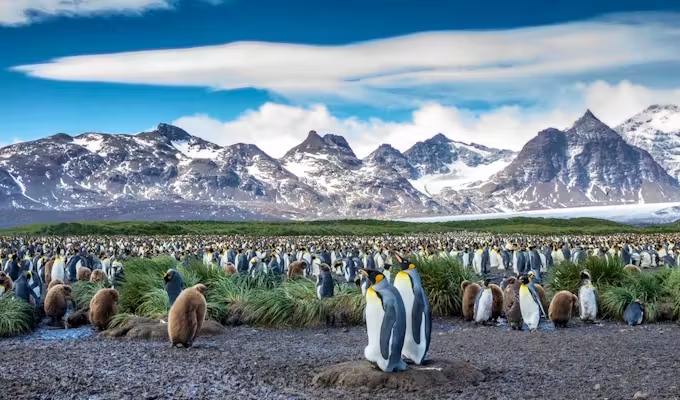
4.9 out of 5
Voyage south in Shackleton’s footsteps, exploring the Southern Ocean's highlights as part of this expansive 20-day adventure. A well-balanced itinerary gives plenty of time in each jaw-dropping location. Explore from the comfort of your sleek purpose-built expedition ship, accompanied by…
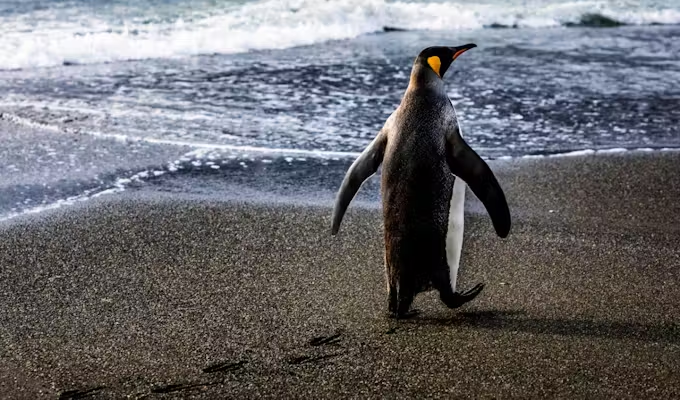
4.6 out of 5
This voyage takes in the wildlife-rich wonders of South Georgia and the Falklands, as well as the dramatic landscapes of the Antarctic Peninsula. You’ll travel on board one of the most exciting new polar ships with spacious cabins, state-of-the-art technology…
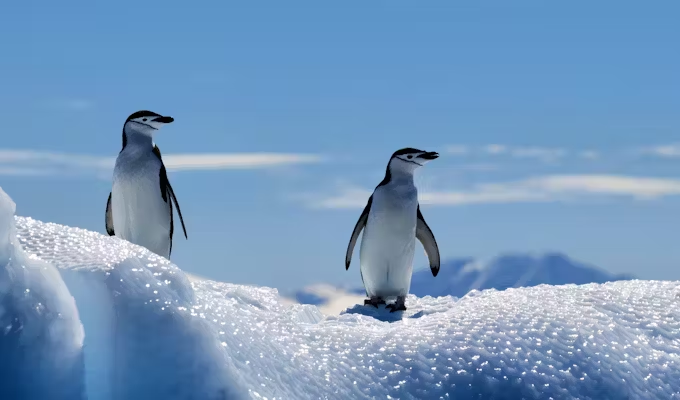
4.6 out of 5
With a good choice of departure dates through the season across three medium-sized ships, this 19-22 day trip stands out for its value for money and the broad range of cabin categories available, including Quads, which are…
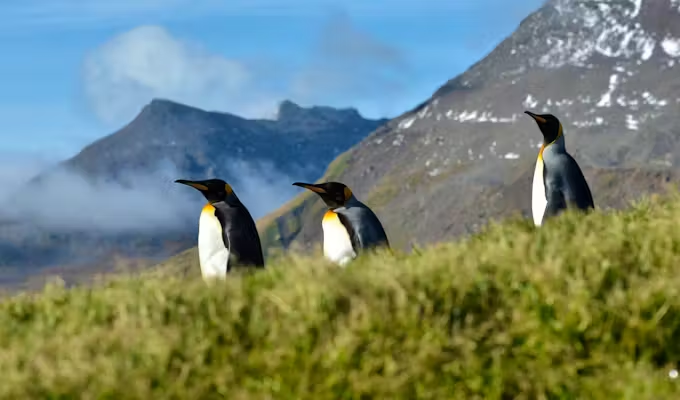
4.6 out of 5
This unique express trip saves time by flying to Antarctica, cutting out 2 sailing days and skipping the Falklands. Maximising your time amid the spectacular wildlife and scenery of Antarctica and South Georgia is the focus of this voyage. The…
While it is possible to make dry landings on Carcass Island at the jetty at Port Pattison Bay, the majority of expedition cruise ships make zodiac landings at either of the two beaches a couple of miles away on the southern tip of the island. Depending on the prevailing weather, you may land at either Dyke Bay or Leopard Beach.
If time allows, it is possible to make the 2½ mile (4km) walk from the beaches to Carcass Settlement. It's a stiff uphill walk but the cliffside views are tremendous. Stick to the marked path that follow the fences to avoid disturbing any gentoo penguins nesting in the tussac grass and leave gates as you find them. When near magellanic penguins be careful not to trample any burrows.
October to December is lambing season on Carcass Island, so if visiting at this time take extra care not to disturb ewes.
NOTE: Ship itineraries and visits to specific landing sites in the Falkland Islands can never be guaranteed. Plans can change as fast as the weather in the South Atlantic: decisions on which locations to visit are always made on the day by the ship's captain and expedition leader.

In the southwest of the Falklands, New Island is one of the most scenic places in the archipelago, and is home to one of its most busiest and thriving seabird colonies.
Discover More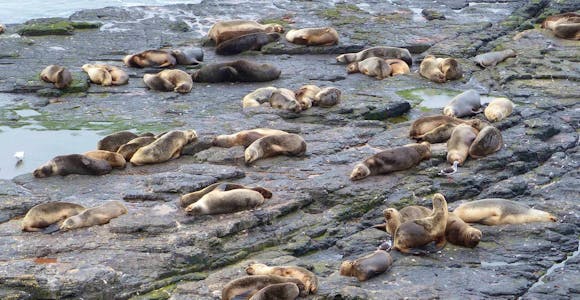
The narrow curved line of Bleaker Island is a great place for birdwatching, with three species of penguin, an enormous imperial shag colony and plenty of waterfowl.
Discover More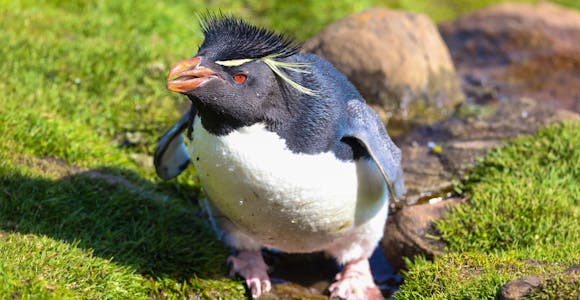
Saunders Island offers the chance to see four penguin species in one Falklands location, as well as a black-browed albatross colony
Discover More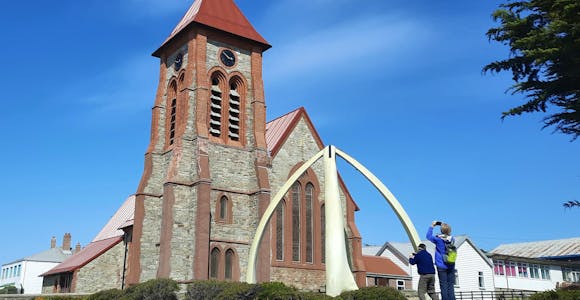
The pocket-sized capital of the Falkland Islands is full of history and easily explored on foot by visitors from expedition cruise ships.
Discover MoreWe'll spend some time listening to your aspirations, then discuss the kind of experience that might suit you.
Next we'll discuss the options, shortlist the best trips for you and present you our impartial recommendations.
We'll place a 24 hour hold on your preferred option - without obligation - whilst we talk through the details.
With over 100 years of Antarctic experience between us, we can help guide you to exactly the right trip for you.
1-888-970-4570We don’t charge a commission and there are no hidden fees. Just impartial, expert advice from the leading Polar cruise agent. Schedule a call with our Antarctic Experts today.
This website uses cookies to ensure you get the best experience on our website. Privacy policy